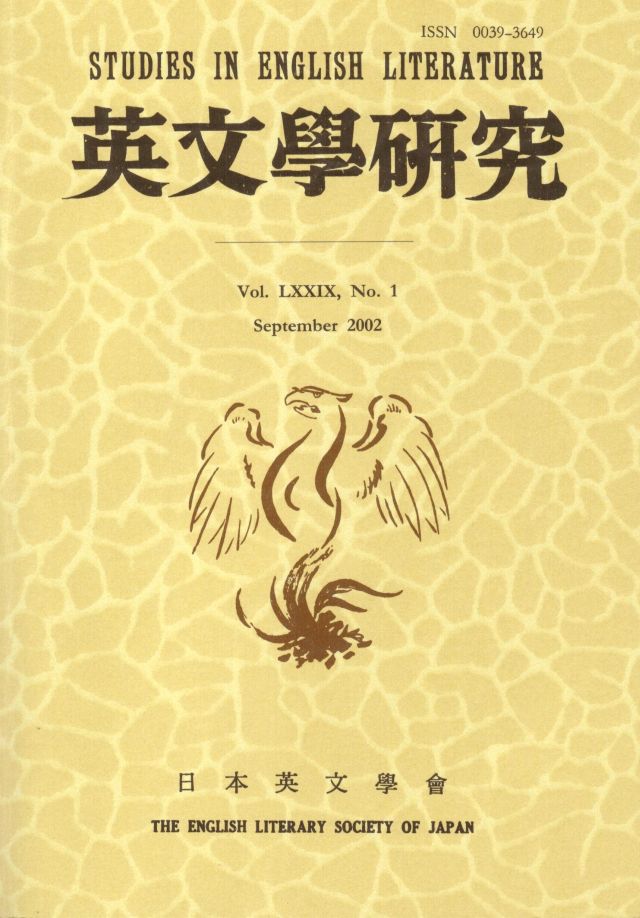Volume 31, Issue 1
Displaying 1-31 of 31 articles from this issue
- |<
- <
- 1
- >
- >|
-
Article type: Cover
1954 Volume 31 Issue 1 Pages Cover1-
Published: December 30, 1954
Released on J-STAGE: April 10, 2017
Download PDF (46K) -
Article type: Index
1954 Volume 31 Issue 1 Pages Toc1-
Published: December 30, 1954
Released on J-STAGE: April 10, 2017
Download PDF (37K) -
Article type: Article
1954 Volume 31 Issue 1 Pages 1-15
Published: December 30, 1954
Released on J-STAGE: April 10, 2017
Download PDF (1024K) -
Article type: Article
1954 Volume 31 Issue 1 Pages 16-34
Published: December 30, 1954
Released on J-STAGE: April 10, 2017
Download PDF (1283K) -
Article type: Article
1954 Volume 31 Issue 1 Pages 35-50
Published: December 30, 1954
Released on J-STAGE: April 10, 2017
Download PDF (1081K) -
Article type: Article
1954 Volume 31 Issue 1 Pages 51-70
Published: December 30, 1954
Released on J-STAGE: April 10, 2017
Download PDF (1191K) -
Article type: Article
1954 Volume 31 Issue 1 Pages 71-76
Published: December 30, 1954
Released on J-STAGE: April 10, 2017
Download PDF (440K) -
Article type: Article
1954 Volume 31 Issue 1 Pages 77-85
Published: December 30, 1954
Released on J-STAGE: April 10, 2017
Download PDF (687K) -
Article type: Article
1954 Volume 31 Issue 1 Pages 85-91
Published: December 30, 1954
Released on J-STAGE: April 10, 2017
Download PDF (482K) -
Article type: Article
1954 Volume 31 Issue 1 Pages 91-97
Published: December 30, 1954
Released on J-STAGE: April 10, 2017
Download PDF (512K) -
Article type: Article
1954 Volume 31 Issue 1 Pages 98-102
Published: December 30, 1954
Released on J-STAGE: April 10, 2017
Download PDF (445K) -
Article type: Article
1954 Volume 31 Issue 1 Pages 102-106
Published: December 30, 1954
Released on J-STAGE: April 10, 2017
Download PDF (425K) -
Article type: Article
1954 Volume 31 Issue 1 Pages 106-110
Published: December 30, 1954
Released on J-STAGE: April 10, 2017
Download PDF (447K) -
Article type: Article
1954 Volume 31 Issue 1 Pages 111-114
Published: December 30, 1954
Released on J-STAGE: April 10, 2017
Download PDF (359K) -
Article type: Article
1954 Volume 31 Issue 1 Pages 115-118
Published: December 30, 1954
Released on J-STAGE: April 10, 2017
Download PDF (330K) -
Article type: Article
1954 Volume 31 Issue 1 Pages 118-121
Published: December 30, 1954
Released on J-STAGE: April 10, 2017
Download PDF (349K) -
Article type: Article
1954 Volume 31 Issue 1 Pages 122-125
Published: December 30, 1954
Released on J-STAGE: April 10, 2017
Download PDF (314K) -
Article type: Article
1954 Volume 31 Issue 1 Pages 126-128
Published: December 30, 1954
Released on J-STAGE: April 10, 2017
Download PDF (365K) -
Article type: Article
1954 Volume 31 Issue 1 Pages 128-129
Published: December 30, 1954
Released on J-STAGE: April 10, 2017
Download PDF (245K) -
Article type: Article
1954 Volume 31 Issue 1 Pages 129-131
Published: December 30, 1954
Released on J-STAGE: April 10, 2017
Download PDF (237K) -
Article type: Bibliography
1954 Volume 31 Issue 1 Pages 132-137
Published: December 30, 1954
Released on J-STAGE: April 10, 2017
Download PDF (385K) -
Article type: Bibliography
1954 Volume 31 Issue 1 Pages 137-
Published: December 30, 1954
Released on J-STAGE: April 10, 2017
Download PDF (76K) -
Article type: Appendix
1954 Volume 31 Issue 1 Pages 138-144
Published: December 30, 1954
Released on J-STAGE: April 10, 2017
Download PDF (587K) -
Article type: Appendix
1954 Volume 31 Issue 1 Pages 144-146
Published: December 30, 1954
Released on J-STAGE: April 10, 2017
Download PDF (204K) -
Article type: Appendix
1954 Volume 31 Issue 1 Pages 147-
Published: December 30, 1954
Released on J-STAGE: April 10, 2017
Download PDF (64K) -
Article type: Bibliography
1954 Volume 31 Issue 1 Pages 148-
Published: December 30, 1954
Released on J-STAGE: April 10, 2017
Download PDF (21K) -
Article type: Appendix
1954 Volume 31 Issue 1 Pages App1-
Published: December 30, 1954
Released on J-STAGE: April 10, 2017
Download PDF (12K) -
Article type: Index
1954 Volume 31 Issue 1 Pages ii-iv
Published: December 30, 1954
Released on J-STAGE: April 10, 2017
Download PDF (81K) -
Article type: Appendix
1954 Volume 31 Issue 1 Pages App2-
Published: December 30, 1954
Released on J-STAGE: April 10, 2017
Download PDF (51K) -
Article type: Appendix
1954 Volume 31 Issue 1 Pages App3-
Published: December 30, 1954
Released on J-STAGE: April 10, 2017
Download PDF (51K) -
Article type: Appendix
1954 Volume 31 Issue 1 Pages App4-
Published: December 30, 1954
Released on J-STAGE: April 10, 2017
Download PDF (51K)
- |<
- <
- 1
- >
- >|
